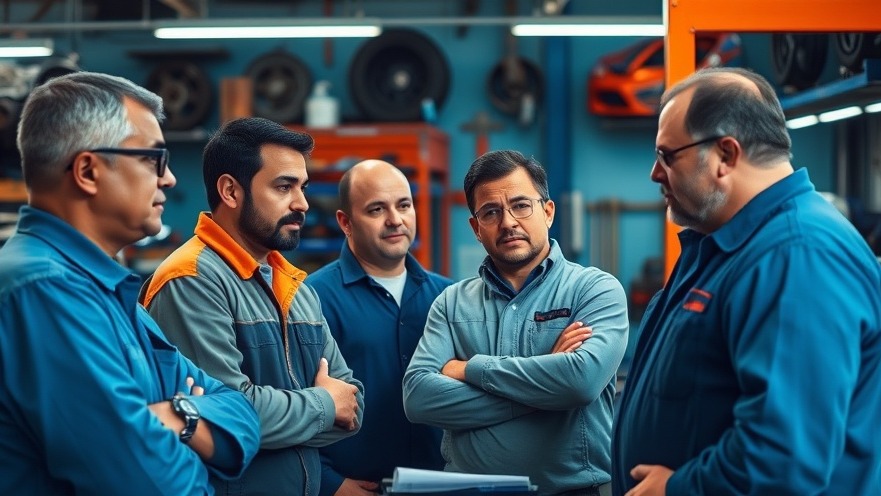
Building a Safety-First Culture: The Key to Thriving Fleet Operations
The recent launch of the Fleet Safety Guidebook by the NAFA Fleet Management Association signifies a monumental step towards establishing a safety-first culture in diverse organizations. Targeted primarily at fleet managers, this guide offers actionable strategies and expert insights into fostering safer operational practices. With the automotive industry constantly evolving, it’s crucial that auto repair shop owners understand and implement these safety protocols to not only protect their workforce but also boost their overall operation.
Practical Tools for Shop Owners to Enhance Safety
The guidebook emphasizes using effective tools such as ride-along programs, driver advisory boards, and safety scorecards. These initiatives are vital for auto repair shop owners, as they align with best practices ensuring that all employees are trained and equipped to work safely. Implementing a ride-along program can help identify risks and improve drivers' operational awareness, ultimately leading to fewer incidents and injury-related costs.
The Importance of Industry Best Practices
NAFA’s Fleet Safety Guidebook curates knowledge from top fleet professionals, making it a reliable resource for those in the automotive industry. By leveraging these insights, auto repair shop owners can implement safety-first strategies that are proven to work. The guide specifically addresses the challenges shop owners face, such as vehicle maintenance protocols and employee safety programs, which enhance performance and promote a culture of care.
Future Trends: Embracing Technology for Safety
Aside from traditional methods, integrating technology into safety practices is essential. The automotive industry is witnessing a rapid increase in smart technologies that help monitor safety and operational efficiency. Fleet managers and repair shop owners can harness these innovations to gather real-time data, allowing them to make informed decisions about safety improvements and resource allocation. Technologies such as predictive analytics can foresee potential risks, enabling preemptive action.
Global Perspectives: Learning from International Standards
While the guidebook is rooted in North American practices, it is essential to look at global safety standards that can benefit local operations. For example, many countries have stringent maintenance regulations that ensure vehicle safety and driver readiness. Understanding and potentially adapting these international standards can provide an added layer of safety and professionalism for auto repair shops, further enhancing their credibility in the industry.
Conclusion: Taking Action for a Safer Future
For auto repair shop owners, enhancing safety protocols is more than complying with regulations; it's about creating a resilient business. By utilizing the strategies outlined in the NAFA Fleet Safety Guidebook, they can build a culture centered on safety, ultimately protecting their staff and customers alike. To access the Fleet Safety Guidebook and begin your journey toward a safer operation, visit the NAFA resource center today!
 Add Row
Add Row  Add
Add 




Write A Comment